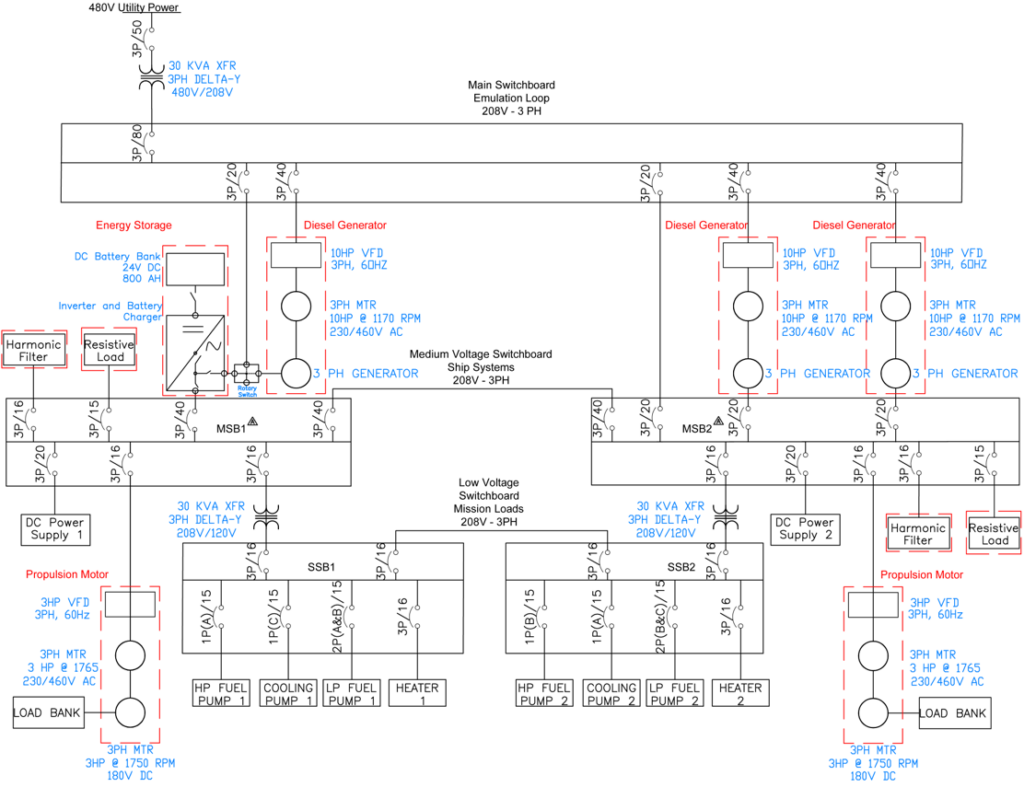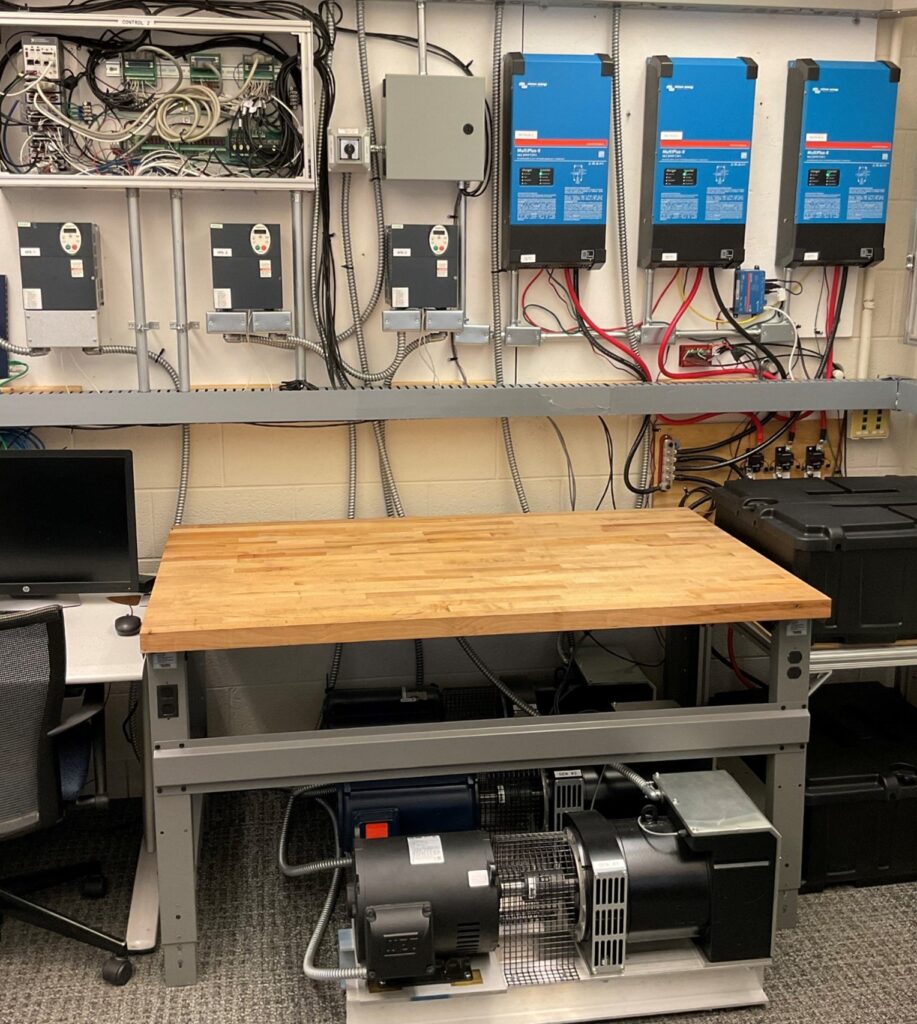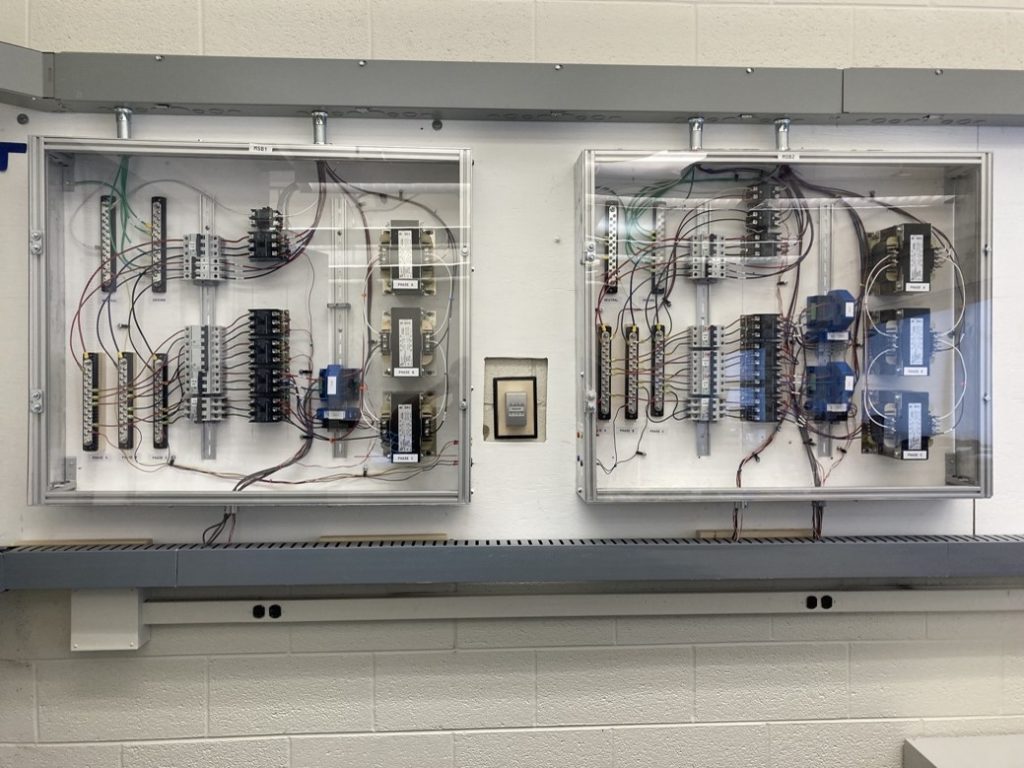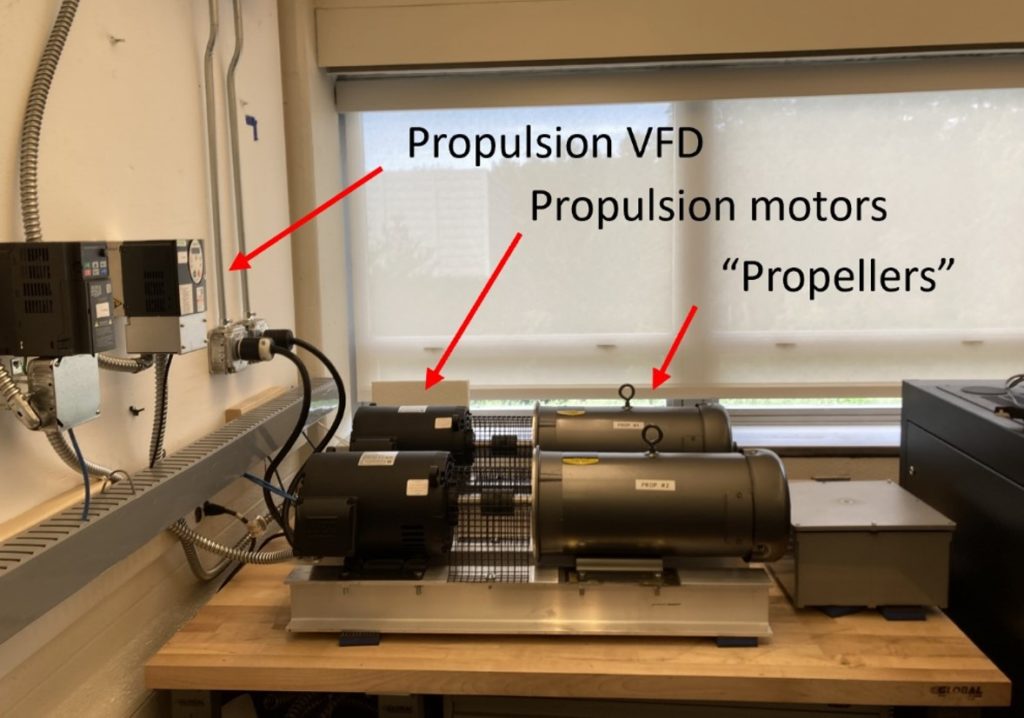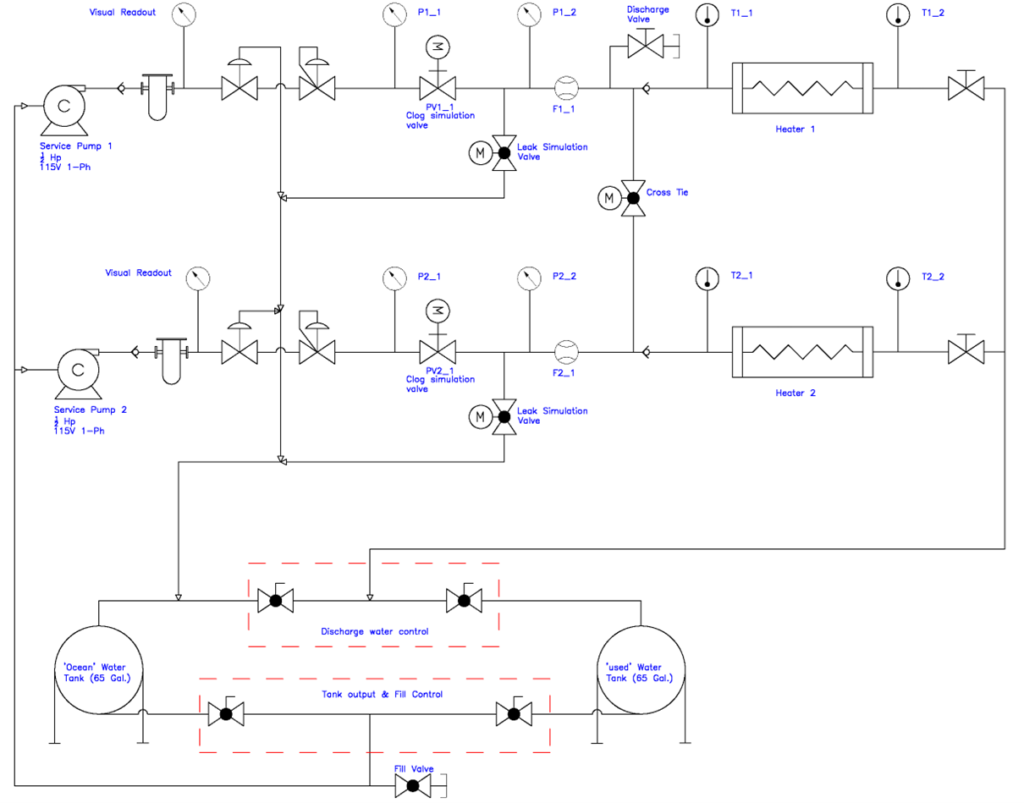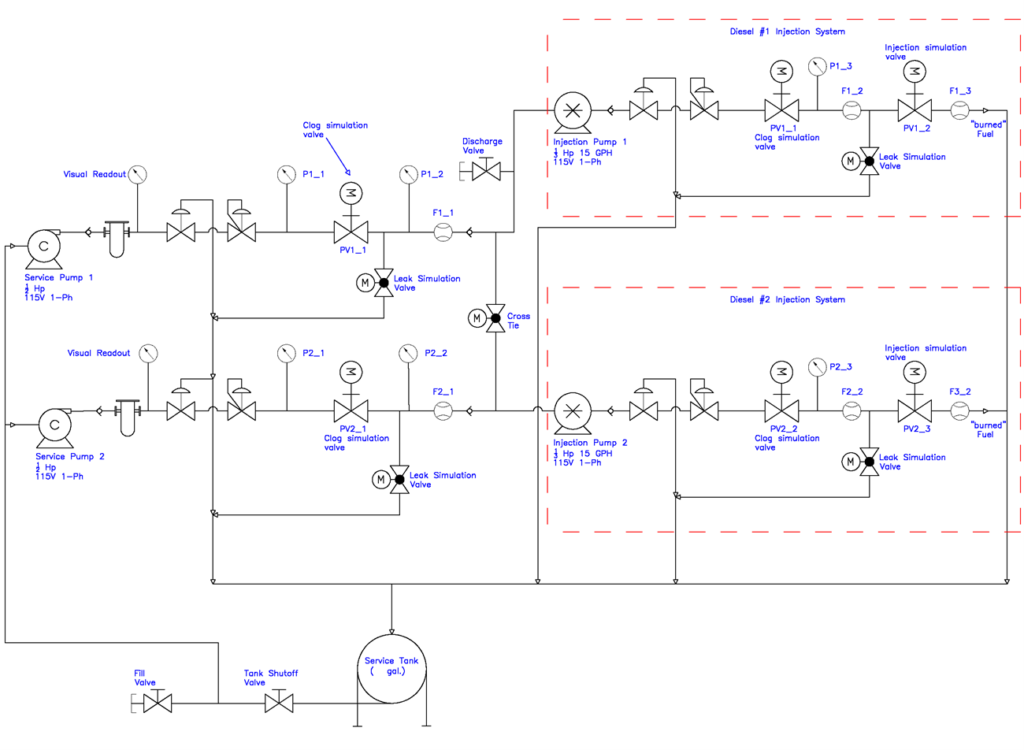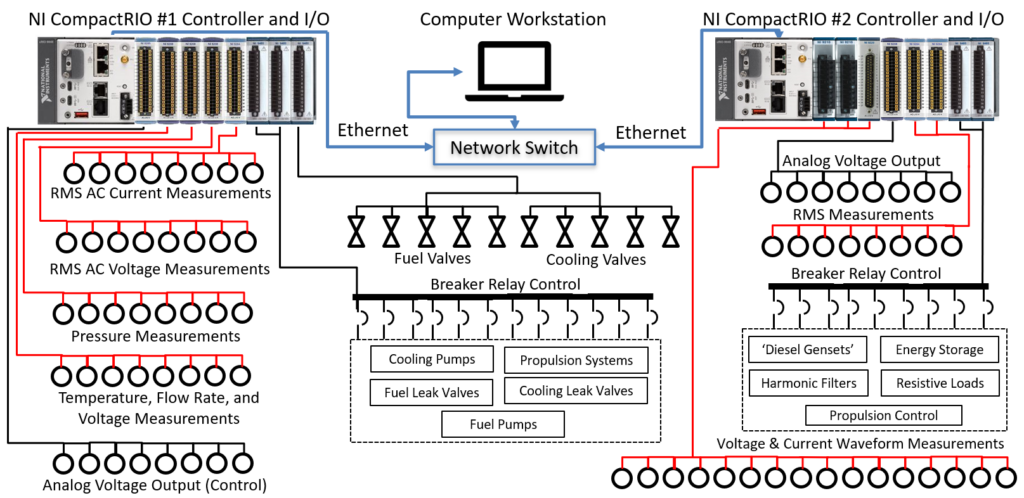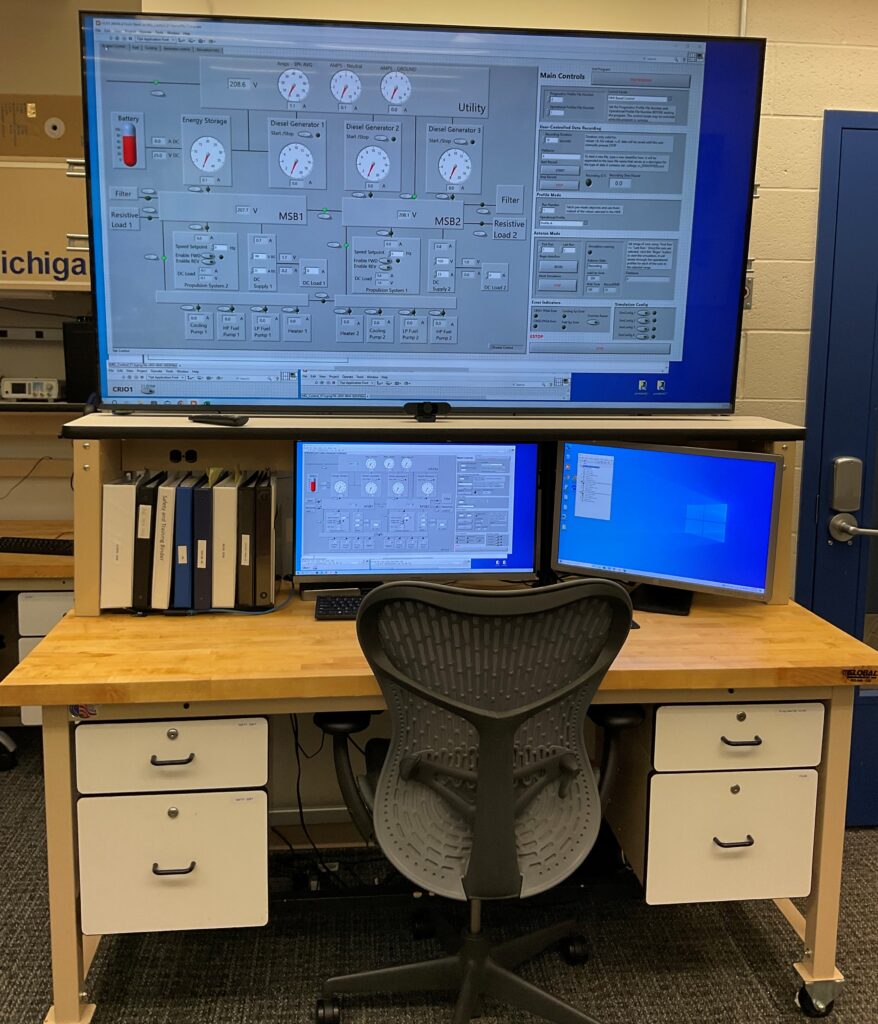The Laboratory consists of six coupled systems to effectively emulate shipboard machinery systems
Electrical System
Our Electrical System provides an emulation of a commercial architecture for an all-electric ship to include:
- Generation, 3 x 7.5kW 3-ph generator sets powered by VFD fed induction machines with the ability to emulate either gas turbine or diesel engine transient behavior.
- Distribution, two ‘HV’ switchboards, 208V, 3-ph
- Energy Storage, 9600 kWh
- Electric Propulsion
Propulsion System
Our propulsion system consists of two 2kW VFD-fed induction motors that power separately excited DC motors which act as the propeller load. Presently, the power generated by the DC machines is dissipated in resistors. A future project is to construct a DC-AC inverter that will allow this power to be recirculated back to the facility power switchboard
Mission System
Mission Loads are emulated through the use of two programmable load banks fed by controllable DC power supplies. The DC Power supplies are fed from the main switchboards.
- These loads can provide up to 7.5kW of load on the switchboards and have been programmed to simulate various dynamic loads such as:
- Electromagnetic Railgun
- Electromagnetic Aircraft Launching System
- Laser Weapon System
- In addition, we have a 2 kW linear resistive load attached to the main switchboards.
Cooling System
The cooling system emulates a typical shipboard central seawater cooling system
- Two independent loops are provided for redundancy.
- Each loop has a dedicated seawater cooling pump, pressure relief valve and pressure regulating valve.
- Faults can be inserted via controlled clogging or leak valves.
- The two independent cooling loops feature a cross-connect to investigate the effects of system redundancy.
- Each loop has a 3kW electric heater to provide a heat load into the cooling system. The heater is controlled to simulate the heat rejected by the generator sets, propulsion units and other shipboard loads.
Fuel System
The fuel system emulates a typical shipboard fuel service system:
- Dual redundant service pumps with pressure regulation and relief valves.
- Two independent loops with cross-connect ability to investigate the effects of system redundancy.
- Faults can be inserted in either loop with clogs or leaks.
- The high pressure ‘on engine’ system is simulated with a positive displacement pump and high speed injection valves to emulate individual injection pulses in diesel engines.
Control System
The control and monitoring system has been implemented in a National Instruments LabVIEW environment.
- Fluid system pressures, temperatures and flow rates are measured and recorded.
- Electrical system voltage, current, power, phase angle are measured and recorded.
- Control signals are measured and recorded.
- In total, over 200 signals are available in our data sets.
- All signals are recorded at a 1 MHz sample rate.

